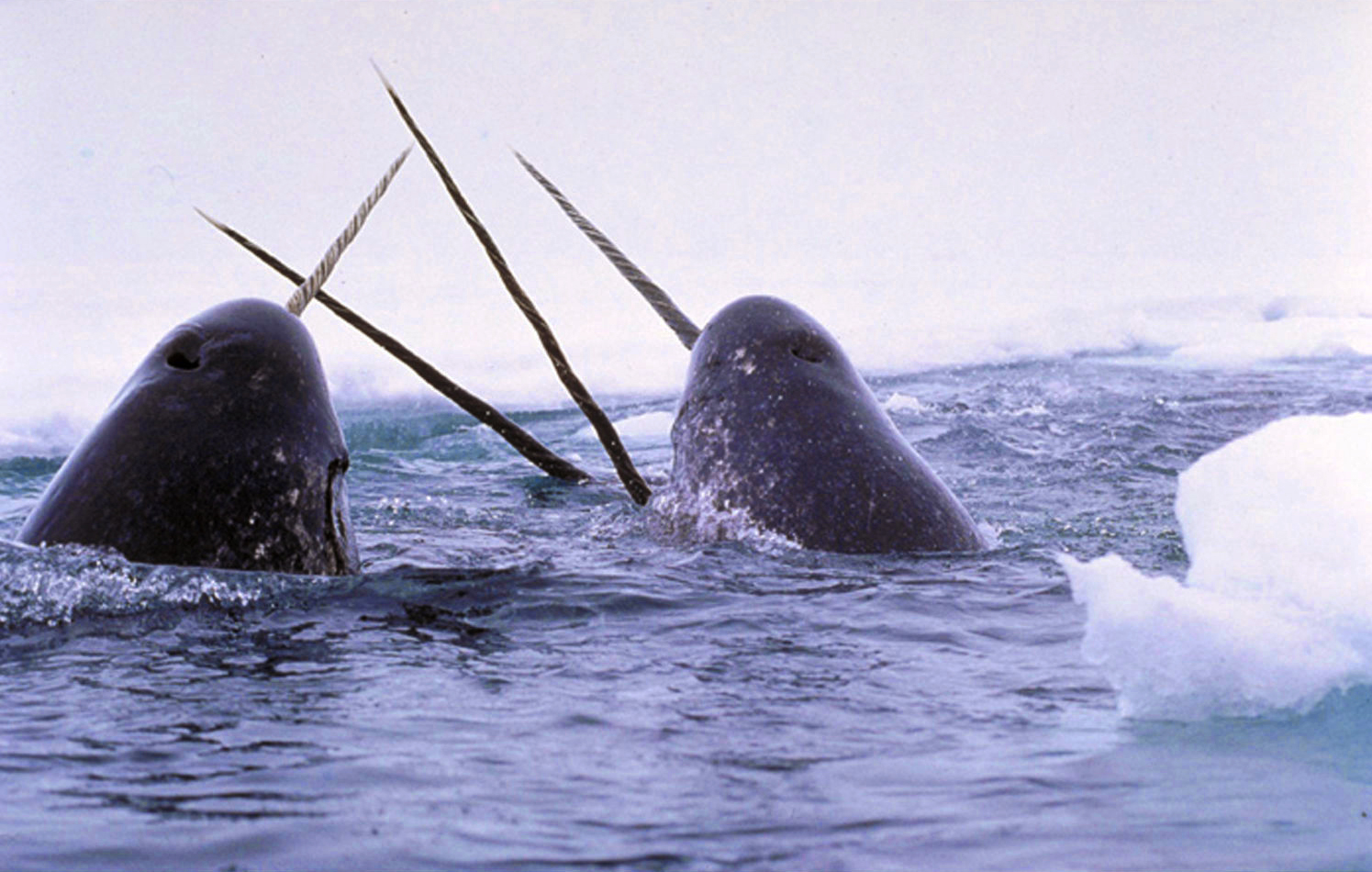There’s an extremely slim chance you have ever seen a narwhal in an aquarium – and for good reason. In North America, there have been only two attempts to keep narwhals in captivity, both of which ended in calamity and tragedy.
Narwhals are a truly unusual species of toothed whales that live in the icy waters of the Atlantic Arctic. Their bodies measure between 3.95 to 5.5 meters (13 to 18 feet) long, excluding the long spiraling tooth that pokes out of their head like the horn of a unicorn. Their shy and skittish nature makes them relatively difficult to study, so many aspects of their behavior remain a mystery.
Not dissuaded by a challenge, the New York Aquarium in Coney Island became the first-ever aquarium to hold a narwhal In 1969.
The young calf was called Umiak, named after the Inuit canoe commonly used to hunt the species in the High Arctic. It was captured by Inuits who said it followed their canoe back to camp after they had killed its mother for meat.
To keep Umiak company, the narwhal was put in a tank alongside a female “white whale”, presumably a beluga whale, who acted as its stepmother. Staff reportedly fed the animal with huge amounts of milk mixed with chopped clams each day, which appeared to keep it happy.
However, its stint at the aquarium was short. On October 7, 1969, less than a year after it arrived at the aquarium, Umiak died of pneumonia, as reported by The New York Times at the time.
A rare sight: narwhals breach the water’s surface in the wild.
Image credit: NOAA
The second attempt to keep narwhals in captivity was achieved in 1970 by Vancouver Aquarium in Canada. Their efforts started in 1968 when their ambitious director, Murray Newman, hoped that bringing narwhals to the big city could generate public interest in the elusive species and help with their conservation
As told by the Vancouver Sun newspaper, Newman and a team of sailors led by Inuit guides headed to the sea around Baffin Island in 1968 to capture a narwhal, but the two-week hunt was wholly unsuccessful. Newman returned to the area in 1970 for a three-week hunt, which was also a failure. However, they eventually managed to buy a young, male narwhal from a community of Inuit hunters in Grise Fiord.
He was called Keela Luguk after the word “qilalugaq”, the name for narwhals in some Inuktitut dialects. Within a week of the narwhal arriving at Vancouver Aquarium in August 1970, the facility also managed to capture two female narwhals and three calves, which were placed in the tank alongside Keela Luguk.
While the feat was initially lauded by the public and media, things quickly turned sour. Within less than a month, in September 1970, the three calves had died. By November, the two females also passed away. Public outrage started to mount and there were calls by the mayor of Vancouver to return Keela Luguk to the wild, which Newman batted off.
Eventually, on December 26, it was reported that Keela Luguk had died too.
The reason why narwhals don’t fare well in captivity is not perfectly clear. It’s fairly common to see their closest living relative, the beluga whale, in aquarium tanks where they appear to live (relatively) happy and long lives.
However, it is evident that narwhals are exceptionally sensitive animals. Their iconic “tusk” is filled with 10 million nerve endings which help detect subtle changes in temperature, pressure, particle gradients, and much more. Studies have also indicated that the species is extremely sensitive to human-made noise. Even a single ship passing through their environment can be enough to radically upset their behavior.
It’s unlikely that the world will ever see another attempt to put a narwhal in an aquarium. Recent years have seen a vast shift of public perception regarding marine mammals in captivity, namely thanks to the documentary Blackfish which exposed the practices of SeaWorld and their captive orcas.
Judging by how poorly these two attempts were handled, it’s undoubtedly a good thing that the public appetite for captive whales has dried out.
Source Link: The Dark Reason Why You Never See Narwhals In An Aquarium
